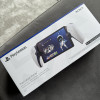Blood transfusions save lives. But the existence of multiple incompatible blood groups within the population means that, before blood can be administered, it needs to be cross-matched against the potential recipient to rule out a risk of agglutination or transfusion reaction. This takes time and also means that stocks of some blood types can run very low.
 Now Canadian scientists might have a way around the problem - chemical camouflage for red blood cells that masks their normal blood group. Writing in the journal Biomacromolecules, Montreal-based researcher Sania Mansouri and her colleagues have developed a technique for applying a six-layer-deep coating of three different substances to the surfaces of red blood cells; this covers up the antigens that give the cells their normal blood group identify while leaving them otherwise fully functional and viable.
Now Canadian scientists might have a way around the problem - chemical camouflage for red blood cells that masks their normal blood group. Writing in the journal Biomacromolecules, Montreal-based researcher Sania Mansouri and her colleagues have developed a technique for applying a six-layer-deep coating of three different substances to the surfaces of red blood cells; this covers up the antigens that give the cells their normal blood group identify while leaving them otherwise fully functional and viable.
The coating comprises four layers of alginate and another sugar-based polymer called chitosan, topped with two layers of alginate and a second molecule containing poly-ethylene glycol. The team achieve this "cellular icing" trick by making use of the fact that the molecules they employ carry positive or negative charges and so naturally stick to the surfaces of the cells and also to each other. The coating is applied by incubating the cells in solutions of the chemicals for certain lengths of time.
Tests showed that over 95% of the cells treated this way remained viable and oxygen uptake did not differ significantly compared with untreated red cells. The cells were not tested in animals, but this will be a critical next step in the onward development of this promising technology which could provide, in the words of the researchers, a supply of "universal red blood cells".
- Previous Tiny cameras
- Next Flexible treatment for fibrillation










Comments
Add a comment